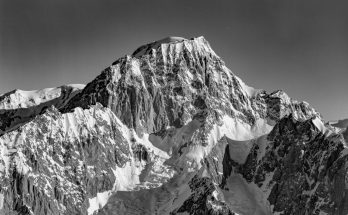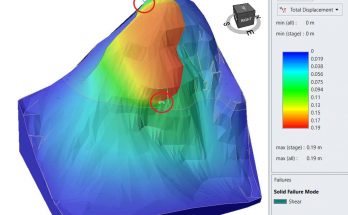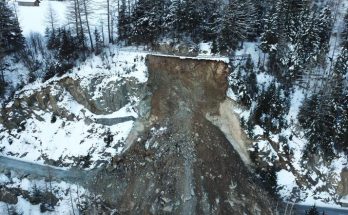Benoît Mazotti
Co-supervisors: Prof. Michel Jaboyedoff, Alexandre Loye
Expert: François-Joseph Baillifard
The aim of this work is to diagnose the main hazard for debris flows in the North watershed of Mt-Rogneux which is located in the Val de Bagnes in Valais / Switzerland. The village of Versegères is on the fan, which is partly in danger.
The methodology has been divided into four parts which are: 1. A general analysis of the watershed that responds to the questions where? and what? 2. A specific analysis of the watershed that responds to the questions why? how? and How much ? 3. A diagnosis of debris flow hazard answering the questions when? how far? which intensity? and 4. An analysis of the influence of the permafrost as an aggravating factor triggering debris flows (secondary purpose).
Regarding to the general analysis of the watershed, the two main goals were to create a map of phenomena and makes hypotheses on the dynamic of the watershed. This approach has allowed to identify signs of previous torrential activities and thus to make some assumptions on the dynamics of the torrent. The conclusions were that the watershed is composed by two types of dynamic (high frequency and low to medium intensity or low frequency and exceptional intensity) and that the role of the deposition area (accumulation – remobilisation) is important. It was possible to detect sectors that are clearly more dangerous than others. The frequency analysis of the watershed permit to show the importance of seasonality on the probability of occurrence of debris flows. A short chapter will introduce the influence of climate change on this phenomenon.
For the specific analysis, the main purposes were to characterize the dangerousness of the sources areas, to know the type of debris flows, to estimate their sizes and to perform simulations of spread within the watershed. First, the analysis of the dangerousness of the sources areas indicates that the central corridor has the higher probability of debris flows trigger. The granulometry analysis identified that the debris flows were from granular type. Maximum volumes of debris flows for frequent, rare or extreme frequencies have been determined. From this, it was possible to calculate potential discharge from which we will figure out the speeds and the heights of the overflow cone droppings. To conclude this chapter, seven spread scenarios from the sources areas were modelled to find the spatial extent of such events.
The assessment of debris flow hazard begins with an estimation of the danger of the debris flow for the fan and the village of Versegères. From the calculations of discharge and speed it was possible to detect areas of supposed overflows. Six scenarios of events have been established for the three probabilities of occurrence: High (frequent scenario), medium to low (rare scenario) and very low (extreme scenario). The conclusions highlighted more dangerous areas and some conflicts with human infrastructures. In the end, all the limits of propagation have been grouped to form a single map, easier to use to inform people.
A method was created for the responsible of natural hazards (specialists) in order to qualitatively estimate the debris flows hazard on the time axis. Coupled with an intensity of rain expected or real, this qualitatively estimation can be linked to one or more scenarios of those kind of events.



